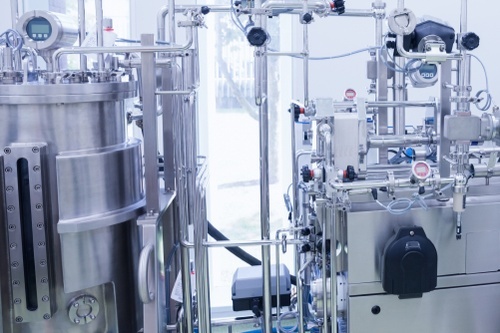Insights Into The Bioprocessing Market
The latest report from SDi examines the bioprocessing market which they project will grow at a compound annual growth rate (CAGR) of 9.0% during the next five years.
The global demand for biopharmaceuticals is expanding at a rapid pace, as they are more extensively accepted for the clinical treatment of a wide range of ailments. Unlike small molecule drugs, these biomolecule-based therapeutics, or biologics, are produced using living cells in two distinct phases, called upstream and downstream, which necessitates unique manufacturing processes collectively known as bioprocessing.
Bioprocessing utilizes highly specialized equipment and processes that are subject to stringent regulation. Production-scale bioprocessing is more than a collection of individual instruments. Manufacturing equipment is often custom built to facilitate carefully planned production flow through the entire manufacturing process. In Bioprocessing Technologies 2020, SDi explores the market for five categories of analytical bioprocessing technologies used in the pharma/bio sector. These include:
Conventional Bioreactors – Bioreactors are manufactured vessels or systems that support a biologically active environment. Cells require a very specific environment in which to grow. The essential equipment needed for bioprocessing is the fermenter or bioreactor.
Single-Use Bioreactors – In contrast to conventional bioreactors, single-use bioreactors are equipped with a disposable bag, pouch, or rigid plastic vessel instead of a reusable culture vessel. Single-use systems offer an array of advantages over traditional bioreactors in terms of reducing cross-contamination risk, faster re-use and fewer maintenance requirements, minimizing labor time, and requiring less stringent validation protocols for regulatory approvals.
Cell Culture Media & Supplements – Cell culture media is also known as growth media. It is an umbrella term that encompasses gels or liquids created to support the growth of cells in artificial environments. Cell culture media contain a variety of compounds and nutrients which support the growth of cells, including amino acids, vitamins, inorganic salts, and serum, among other components.
Filtration & Concentration – Two types of filtration are commonly utilized in bioprocessing. Direct Flow Filtration (DFF), also known as normal flow filtration, employs a single pass of the process fluid through the filter membrane. With Tangential Flow Filtration (TFF), also known as Cross Flow Filtration, the process fluid flows in parallel (tangential) to the membrane surface.
Process Chromatography – Process chromatography consists of pilot- or process-scale systems used for the separation and purification of biomolecules. Advances continue to occur in the development of new chromatography resins and chromatography ligands. The trend toward high-capacity, high-flow resins is cutting the size of columns. There is also a trend toward smaller production batches and a potential for continuous chromatography.
This report sets out to meet the following objectives:
- Estimate the market size of key pharma-biotech bioprocessing technologies and provide segmentation by product type, region, end market, and vendor.
- Project the 5-year growth of the bioprocessing pharma-biotech market for all techniques and segments.
- Provide qualitative insight about market size, segmentation, and growth for each technology group.
- Explore the current and future dynamics of the pharma-biotech bioprocessing market in-depth.
For each of the five technology categories, SDi offers data on market size and five-year forecast by product type and region. Visualizations and insights into supplier market share and supplier participation are also included.
According to SDi
The expected development of vaccines and treatments for COVID-19 will spur bioprocessing revenue, and the overall CAGR to more than 9%. Helping to drive growth in the global single-use bioprocessing market is the greater emphasis on developing drugs targeting smaller, specific populations who have specific diseases – targeted therapeutics. The demand for single-use bioreactors will continue to lead growth over the forecast period, at a CAGR of 11.2%, in part facilitated by demand for COVID-19 vaccines and drugs.
A significant portion of the overall growth in demand for biologics is coming from emerging markets, and in many countries local manufacturing is required by the government. Many biopharmaceutical companies constructing new facilities in emerging markets probably will not invest in traditional stainless steel systems, and instead move immediately to flexible single-use bioreactors and components.
The vendors with the largest market shares in the overall market are suppliers of both upstream and downstream bioprocessing products. The market’s leaders include MilliporeSigma, Cytiva (formerly GE Healthcare), Sartorius, and Thermo Fisher Scientific.
Biopharma Bioprocessing 2020 is essential reading for any company active in one of the fastest growing segments of the life science industry.




